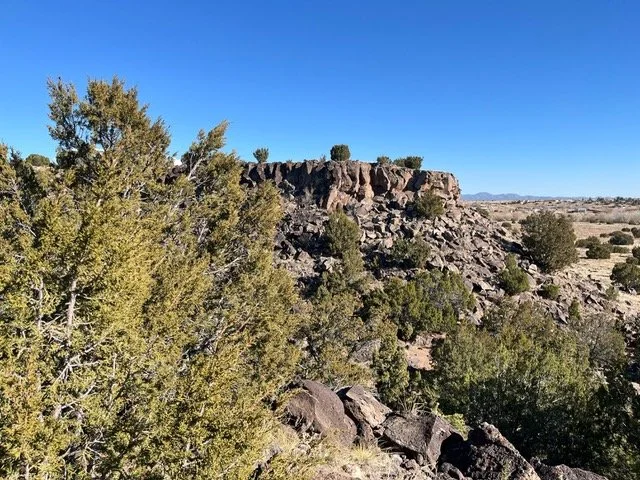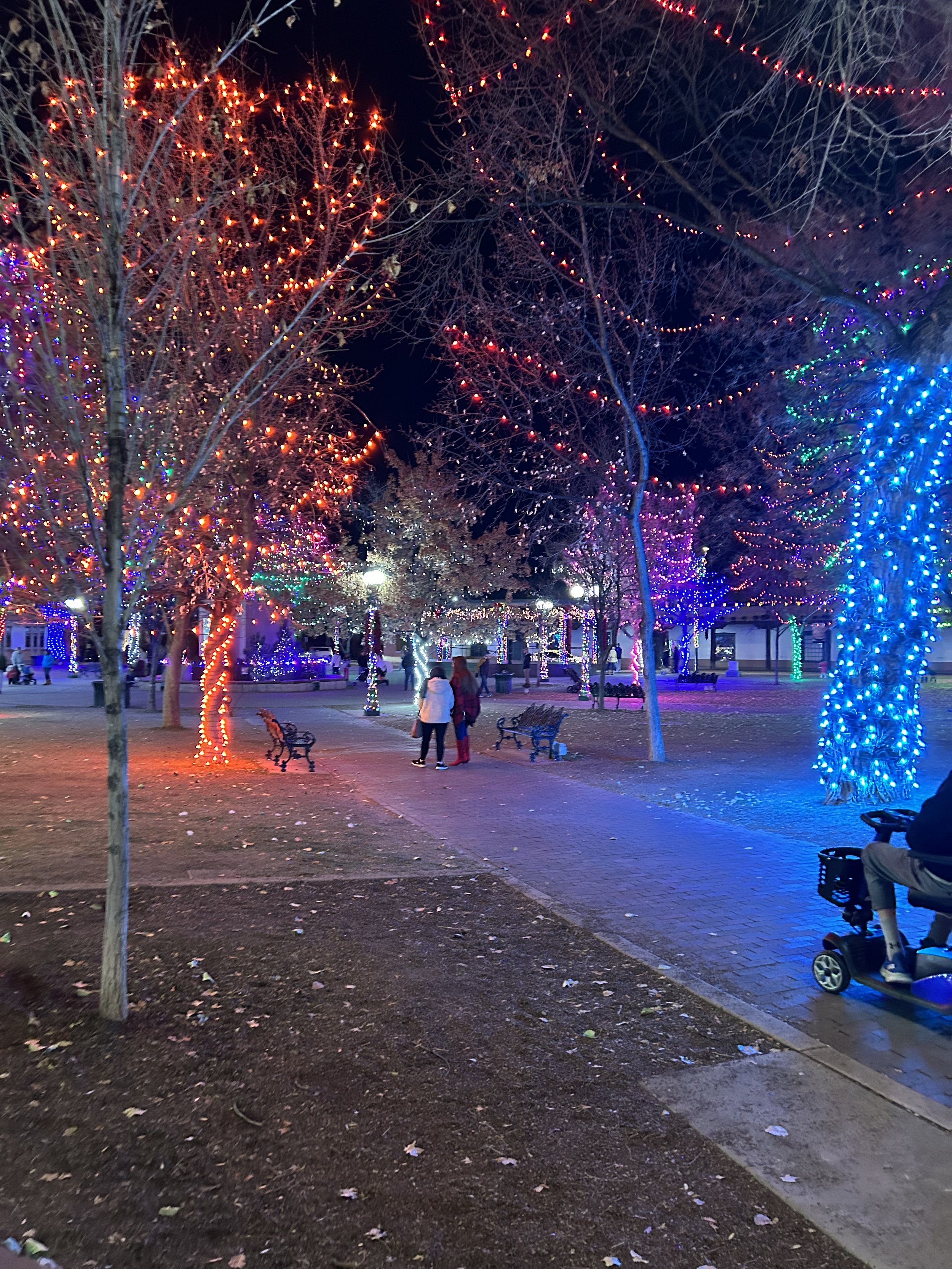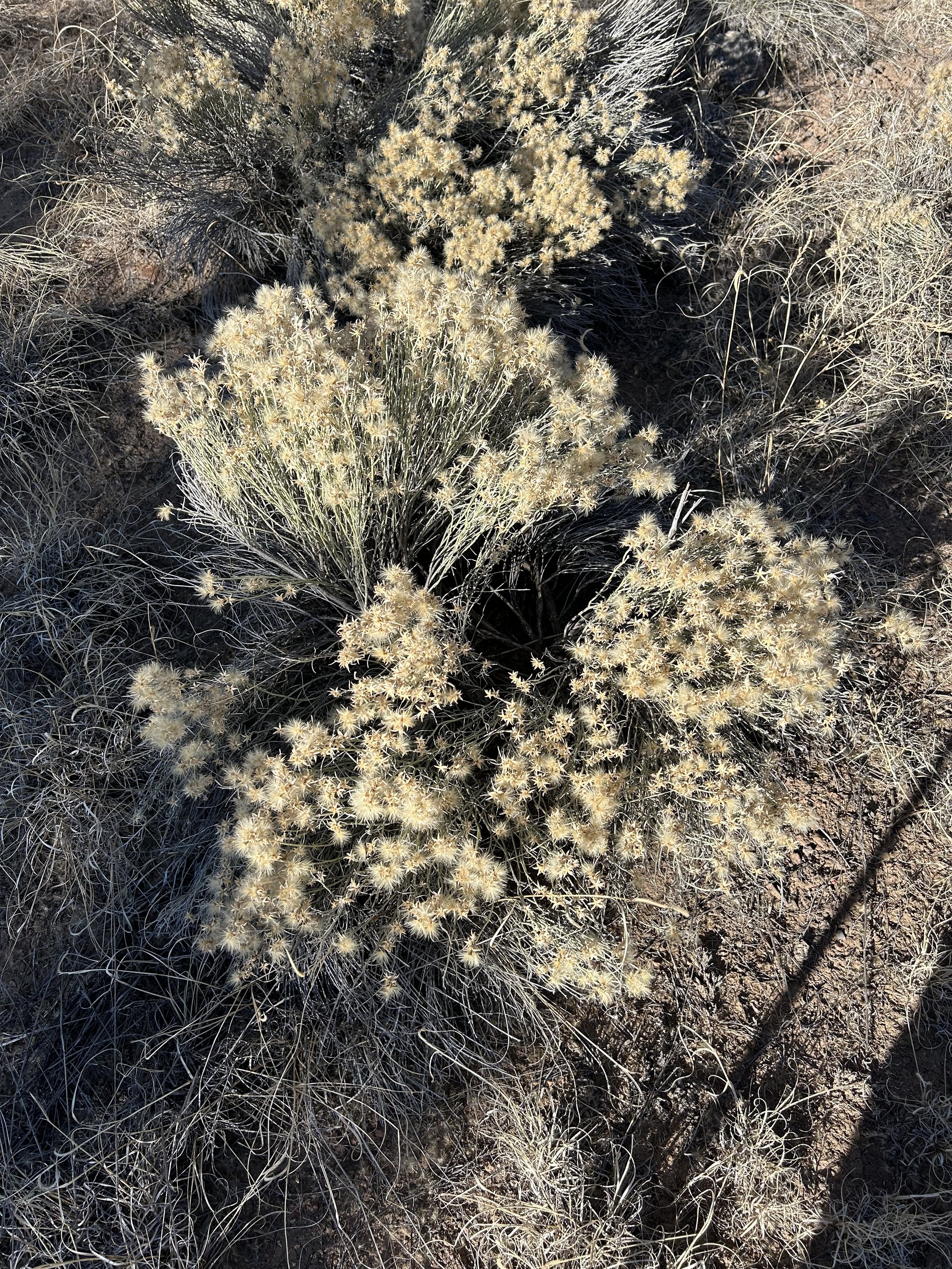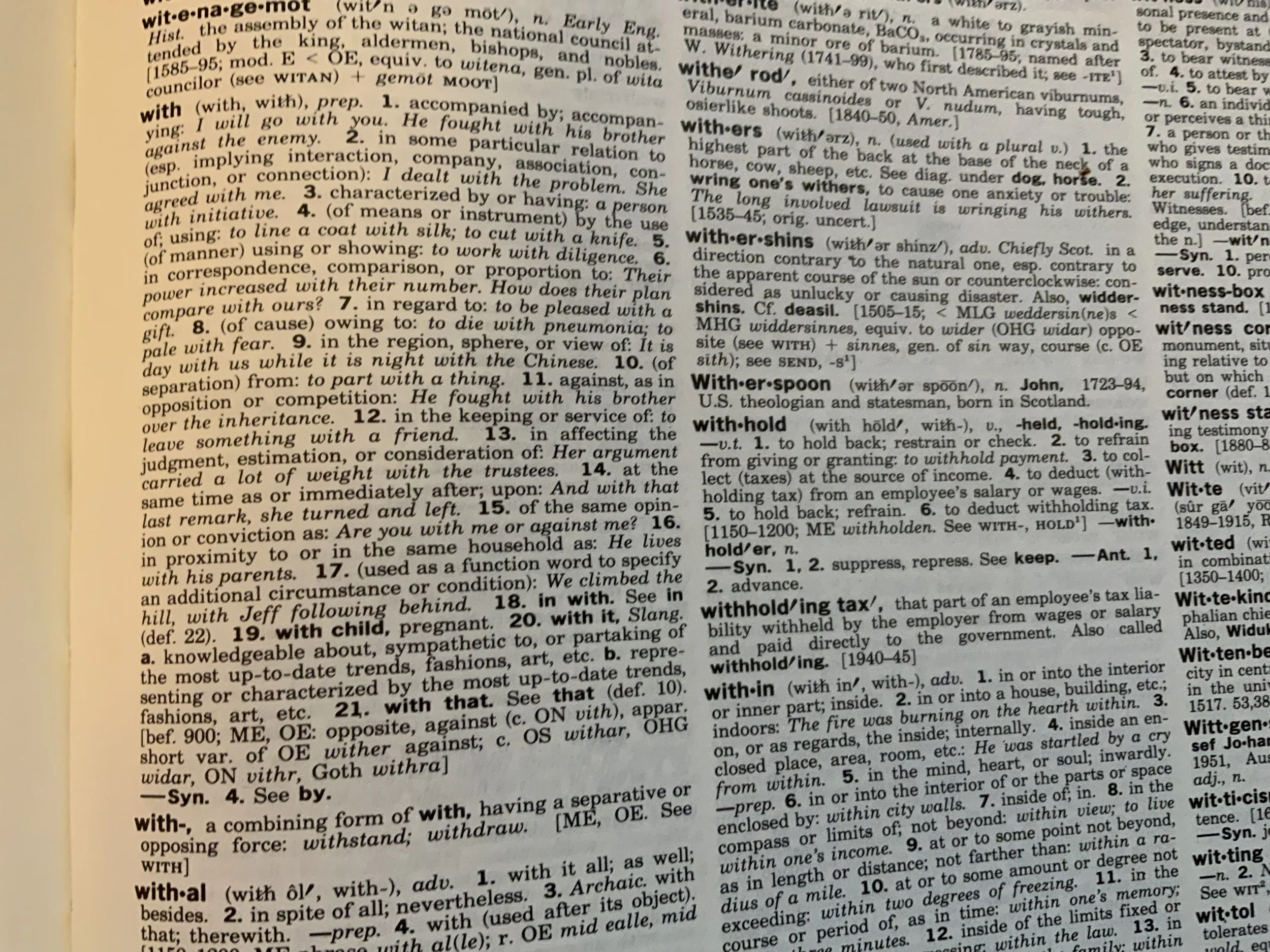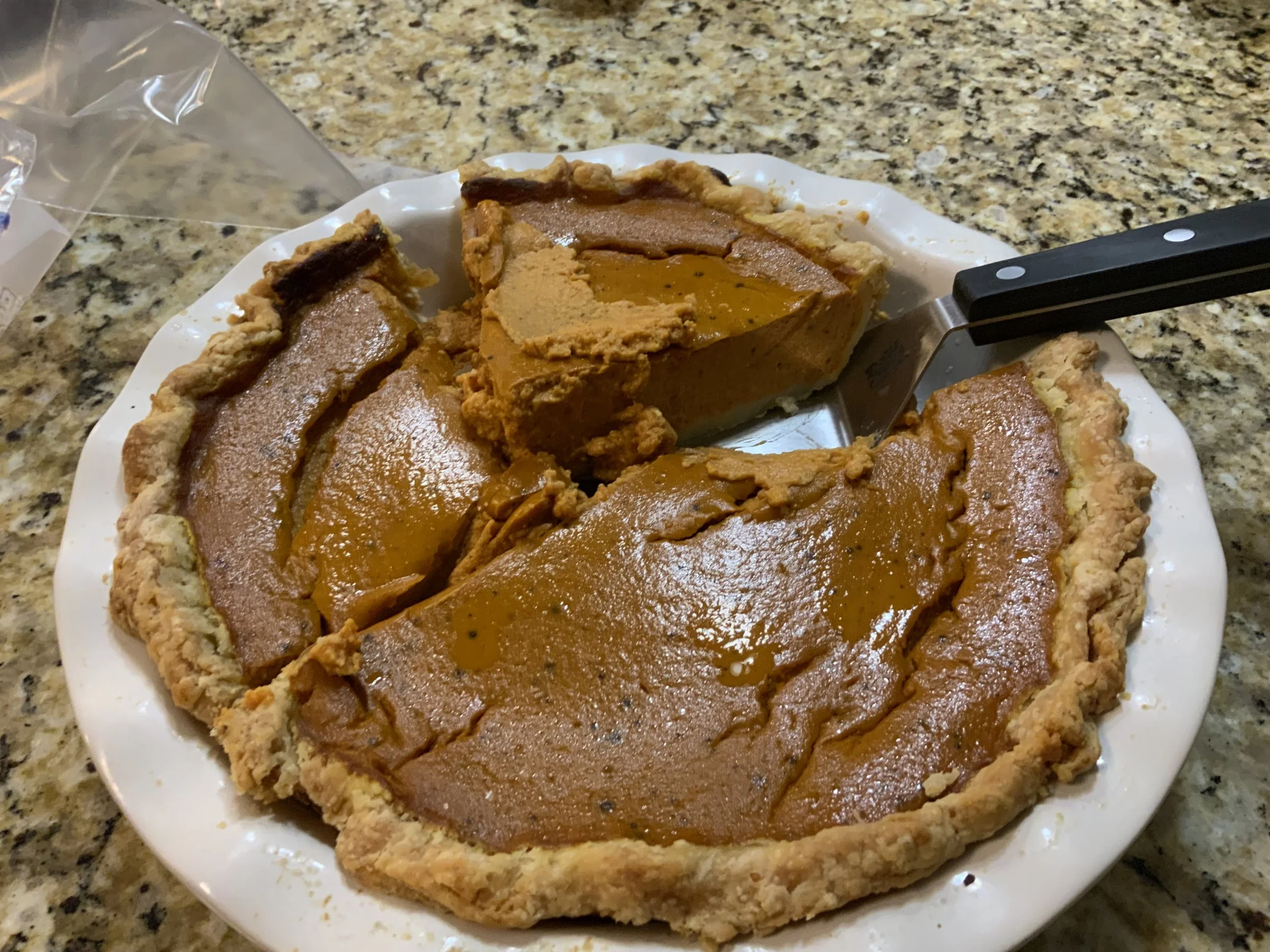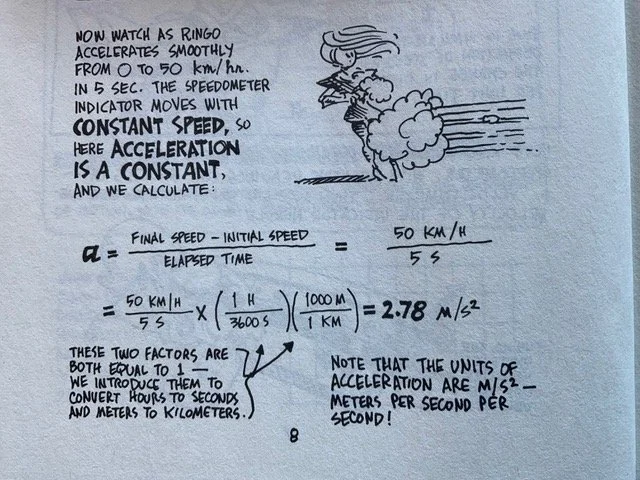#56 A Woman’s Briefs -Petroglyphs 12-09-24
Santa Fe, where we are visiting, is so much more than its famous plaza built in 1609, and the city’s more than 250 galleries. It is a place of complex history, given that its Native population settled some thousands of years before the arrival of the Spanish, the Anglos, and a current problem with poverty.
Santa Fe Plaza (two acres of attraction) ready for Christmas
These lights blink, change colors and patterns. 2 days of labor, 2000 lights
When I mentioned visiting the La Cieneguilla Petroglyphs, a friend said, “That’s a serious hike.” He was right. Warnings such as, “Generally considered a challenging route,” are frequent.
My jeans were torn, our daughter lost the tip from her hiking pole to a volcanic boulder, but David, the 90-year-old, made the 2.4 mile trek without a scrape.
“La Cieneguilla petroglyphs are found easily enough if you know where to turn off.”
Do this: New Mexico I-25 to exit 276, Highway 599 to Santa Fe Relief Route, Airport Road for about three miles, and there you are. Trust me, “Where to turn off,” does require “if you know where.”
Gray Rabbitbrush
Graybeard Grass
We walked from the dirt parking area, past the barbed wire fence, through juniper trees, cholla cactus, graybeard grass, gray rabbitbrush, occasional evidence of an underground spring, and basalt rocks and boulders over which, between which, under which, we squeezed and climbed our way to a mesa’s top to see the La Cieneguilla Petroglyphs.
Volcanic Mesas
Rewarded we were at several sites.
I suspect that “marking” territory, as these early Americans did, has some deep evolutionary source. Animals mark with urine or feces knowing that scent sends a serious message. Humans learned to mark with tools.
Organizations like Mayflower society or Daughters of the American Revolution bask in settlement significance. Just follow the Santa Fe River along to the Rio Grande, and talk to the folk living at the Santo Domingo and Cochiti Pueblos. Since the 13th century at least, their Keresan-speaking ancestors shaped blades from local catches of obsidian glass sharp as surgical scalpels, and made art on basalt boulders with stone chisels and hammers.
Talk about heritage significance! We found Pueblo drawings of flute players, birds aplenty, squiggles and squares, linked circles, and a variety of animal forms. Remarkable.
An added touch to antiquity
Oh, but then there was this, the markings you see on the left. There are appeals on information websites, “Please do not climb on, touch, chalk, wet down, or do rubbings of the petroglyths.”
“Well,” Danny must have thought (Or was it April?), that warning didn’t prohibit marking rocks.” And so, they did.
We came upon their work. We marveled. In this case however, don’t you wish with me that Danny (or April) had used urine or feces to tell us they had visited the site?
